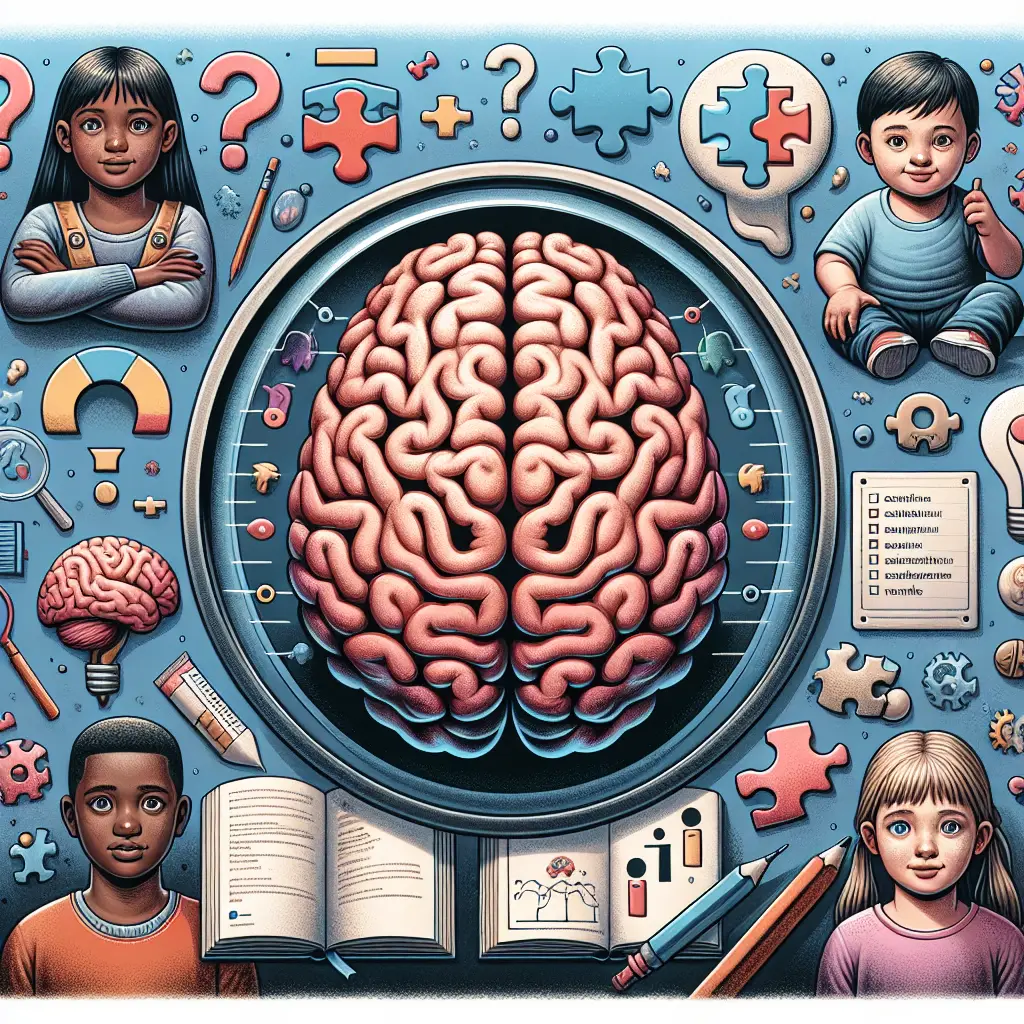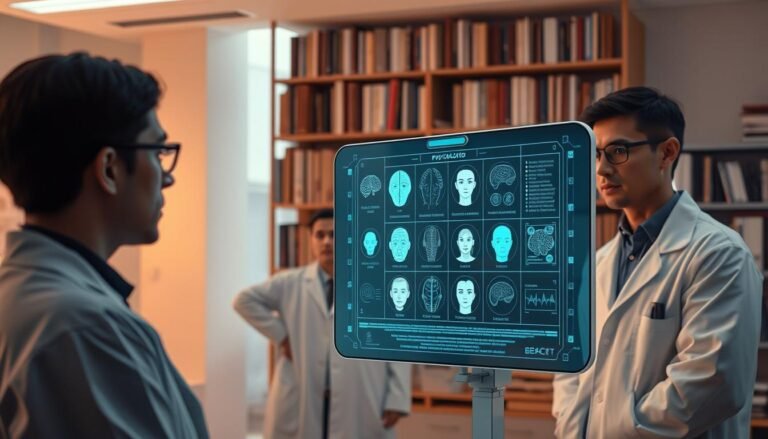
Understanding Neurodevelopmental Disorders: Causes, Symptoms, and Treatment Options – The Essential Guide
Introduction
In our rapidly evolving world, an increasing number of children are being diagnosed with neurodevelopmental disorders. Understanding neurodevelopmental disorders: causes, symptoms, and treatment options has become essential for parents, educators, and healthcare professionals alike. These disorders vary widely in their manifestation and impact. However, one thing unites them: the need for early detection and tailored interventions.
Consider a young girl struggling to fit in at school due to challenges in communication and social interactions. She exhibits symptoms of autism spectrum disorder (ASD), yet her potential remains locked away. With the right understanding and support, she can unfurl her capabilities and thrive in society. This article examines the foundation of neurodevelopmental disorders, offering insights that promise hope and clarity.
What Are Neurodevelopmental Disorders?
Neurodevelopmental disorders (NDDs) are a group of conditions that manifest during the developmental period, affecting the brain’s growth and development, resulting in difficulties with various cognitive, social, and emotional functions. The most recognized types of NDDs include autism spectrum disorder, attention-deficit/hyperactivity disorder (ADHD), intellectual disability, and specific learning disorders.
Key Facts About Neurodevelopmental Disorders
- The World Health Organization estimates that 1 in 160 children has an autism spectrum disorder.
- NDDs can range from mild to severe and affect roughly 15% of children worldwide.
- Early diagnosis and intervention can significantly improve outcomes for affected children.
Understanding Neurodevelopmental Disorders: Causes, Symptoms, and Treatment Options
Causes of Neurodevelopmental Disorders
Neurodevelopmental disorders often stem from a complex interplay of genetic, biological, and environmental factors. While the specifics can vary significantly among individuals, some common causes can be broadly categorized as follows:
1. Genetic Factors
Research indicates a strong hereditary component in many NDDs. Mutations in specific genes can contribute to conditions such as autism and intellectual disabilities. For example:
- Case Study: The Roberts Family
The Roberts family discovered that their son, diagnosed with ASD, had a genetic mutation linked to the disorder. Genetic counseling provided insights into the potential for recurrence in future children, allowing them to make informed family planning decisions.
2. Prenatal Influences
Certain maternal conditions during pregnancy can increase the risk of neurodevelopmental disorders. Factors include:
- Exposure to drugs or alcohol (e.g., fetal alcohol spectrum disorders)
- Maternal infections and illnesses (e.g., rubella)
- Nutritional deficits (e.g., folic acid deficiency)
3. Environmental Factors
Postnatal factors also contribute to the risk of developing NDDs.
- Case Study: The Patel Family
After moving to an urban area with high pollution levels, the Patel’s daughter showed signs of ADHD. Researchers found evidence linking prenatal exposure to environmental toxins and increased ADHD incidence.
Symptoms of Neurodevelopmental Disorders
Understanding neurodevelopmental disorders: causes, symptoms, and treatment options is crucial for identifying the specific symptoms associated with each condition. Symptoms can vary widely but may include:
Autism Spectrum Disorder (ASD)
- Difficulty with social communication
- Repetitive behaviors
- Restricted interests
Attention-Deficit/Hyperactivity Disorder (ADHD)
- Inattention
- Hyperactivity
- Impulsivity
Intellectual Disability
- Below-average intelligence
- Delayed milestones in learning and adaptive functioning
Chart: Understanding Symptoms of Various Neurodevelopmental Disorders
| Disorder | Common Symptoms |
|---|---|
| Autism Spectrum Disorder | Social challenges, repetitive behaviors |
| Attention-Deficit/Hyperactivity Disorder | Inattention, hyperactivity |
| Intellectual Disability | Below-average intelligence, delayed milestones |
Treatment Options for Neurodevelopmental Disorders
Understanding neurodevelopmental disorders: causes, symptoms, and treatment options highlights the range of interventions available that can significantly improve a child’s quality of life.
1. Behavioral Interventions
Behavioral therapies are often effective for children with ASD and ADHD. Techniques include:
- Applied Behavior Analysis (ABA)
- Cognitive Behavioral Therapy (CBT)
Case Study: The Martinez Family
The Martinez family enrolled their son, diagnosed with ASD, in an ABA program. Over several months, they noticed significant improvements in his communication skills and ability to interact with peers.
2. Educational Support
Special education services can help children with NDDs thrive academically. Individualized Education Programs (IEPs) customize learning approaches to fit each child’s unique needs.
3. Medication
While medications do not cure NDDs, they can help manage symptoms. Common medications include stimulants, non-stimulants, and antidepressants.
Case Study: The Johnson Family
After discussions with their child’s psychiatrist, the Johnson family began a treatment plan that incorporated a stimulant for their son’s ADHD. The improvement was remarkable, aiding in his school performance and social interactions.
4. Family and Support Group Counseling
Support for families is essential. Connecting with others who have similar experiences offers emotional relief and practical strategies for navigating the challenges of raising a child with neurodevelopmental disorders.
Taking Action: Empowering Parents and Caregivers
Advocacy and Awareness
Understanding neurodevelopmental disorders: causes, symptoms, and treatment options is paramount for advocacy. Parents should engage with local advocacy groups and participate in awareness campaigns to reduce stigma and improve access to resources.
Self-Care for Caregivers
Caring for a child with an NDD can be emotionally taxing. Caregivers must prioritize self-care and connect with support networks for guidance and respite.
Conclusion
In summary, understanding neurodevelopmental disorders: causes, symptoms, and treatment options is crucial for fostering a supportive environment for those affected. With early intervention, tailored treatment plans, and community support, families can unlock the potential of children with NDDs, guiding them toward a brighter future. As we deepen our understanding of these disorders, we empower ourselves and our communities, transforming challenges into opportunities for growth.
FAQs
1. What are some common neurodevelopmental disorders?
Common neurodevelopmental disorders include autism spectrum disorder (ASD), attention-deficit/hyperactivity disorder (ADHD), intellectual disabilities, and specific learning difficulties.
2. Can neurodevelopmental disorders be prevented?
While not all neurodevelopmental disorders can be prevented, some risks can be mitigated through proper prenatal care, avoiding substance abuse during pregnancy, and ensuring a healthy environment for children.
3. What role does genetics play in neurodevelopmental disorders?
Genetics can play a significant role in neurodevelopmental disorders, with certain mutations and hereditary factors increasing susceptibility.
4. Are there treatments available for neurodevelopmental disorders?
Yes! A combination of behavioral therapies, educational interventions, medications, and counseling services can help manage symptoms and improve outcomes.
5. How can parents support a child with a neurodevelopmental disorder?
Parents can support their child by seeking early diagnosis, obtaining tailored educational plans, engaging in behavioral therapies, and fostering a supportive home environment.
By exploring the key areas of understanding neurodevelopmental disorders: causes, symptoms, and treatment options, we equip ourselves with the knowledge to facilitate better outcomes for those navigating the complexities of these disorders. Let’s work together to foster understanding, acceptance, and support in our communities for those affected by neurodevelopmental disorders.

















